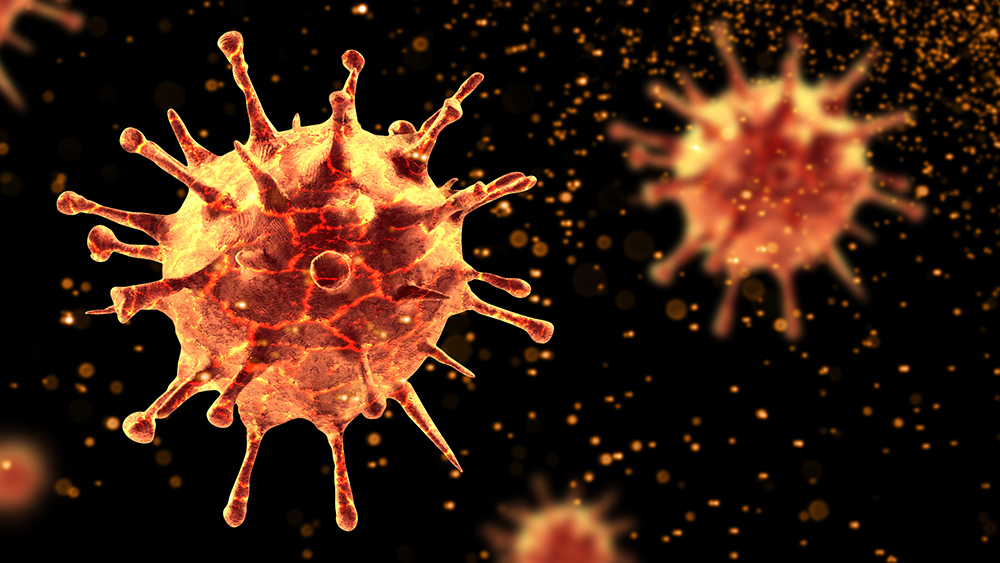Iran reports rising trend in infections, warns of incoming second coronavirus wave
05/07/2020 / By Arsenio Toledo

Iranian authorities reported an upswing in new coronavirus cases, as the country reported 1,680 new cases on Wednesday, making it the latest country to have a total caseload above 100,000.
“We are witnessing a rising trend in the past three or four days, which is significant,” said Ministry of Health spokesman Kianoush Jahanpour in a televised news conference.
Iran has 103,135 confirmed COVID-19 cases, including 6,486 deaths and 82,744 recoveries as of Thursday, according to data collated by Johns Hopkins University.
Last week, the country’s official daily tally for coronavirus reached its lowest level since March 10. However, the number of new cases surged after lockdown protocols were relaxed on April 11. The move was part of Tehran’s phased relaxation plan, which included lifting travel bans and restoring economic activity to levels before the coronavirus. The capital city of Tehran saw traffic levels go back to normal and many packed restaurants and shopping areas.
After mounting pressure from the country’s politically powerful conservative clergy, authorities even allowed mosques to reopen, with Friday prayers resuming in cities that the government deemed to be “low risk” areas. The clergy argued that keeping the country’s mosques closed would deal an irreparable “spiritual blow” to the country. (Related: Iran’s coronavirus crisis is so bad they’re excavating mass graves so large they can be SEEN FROM SPACE.)
Despite the resurgence of businesses, officials are still urging people to avoid non-essential work and travel.
Half of the country is experiencing a second wave of infections
The latest update also said that 15 out of the country’s 31 provinces reported a “gradual rise” of COVID-19 cases despite claims of flattening the curve in two months following containment efforts.
Deputy Health Minister Iraj Harirchi – who himself was infected with the coronavirus – also noted that regions designated as “COVID-19 white spots,” or areas with relatively lower cases, might be experiencing a return to normal life, but social distancing measures would have to be observed.
While Tehran appears to have a downward trend in coronavirus cases, several popular tourist destinations like Gilan, Isfahan and the city of Qom – the latter being the epicenter of the country’s outbreak – have not been spared from the second wave of infections. A similar trend is seen in the oil-rich province of Khuzestan, which also reported a coronavirus resurgence.
Prominent politicians in Iran have already expressed concerns about how much longer the country’s lockdown restrictions should be upheld. Some parliamentarians, such as speaker Ali Larijani, who survived COVID-19, urged lawmakers to maintain social distancing guidelines.
Experts also noted that while Iran might have been able to flatten its curve, this trend is still very fragile and will most likely break if the country tries to reopen the country too quickly. Health officials have warned that it’s only a matter of time before the country feels the full brunt of the incoming second wave and that the country may even experience a third wave of coronavirus infections. A new wave of infections will take a toll on the country’s already overstretched economy and health systems.
If Iran refuses to maintain the country’s lockdown restrictions, and if authorities bow down to political and religious pressures – Iran may have to weather out another onslaught that would infect, and potentially kill, even more people.
Sources include:
Submit a correction >>
Tagged Under:
China, Collapse, coronavirus, covid-19, economic collapse, economy, flattening the curve, Flu, government, health collapse, infections, Iran, outbreak, pandemic, reopening, second outbreak, second wave, superbugs, virus
This article may contain statements that reflect the opinion of the author
RECENT NEWS & ARTICLES
Infections.News is a fact-based public education website published by Infections News Features, LLC.
All content copyright © 2018 by Infections News Features, LLC.
Contact Us with Tips or Corrections
All trademarks, registered trademarks and servicemarks mentioned on this site are the property of their respective owners.





















